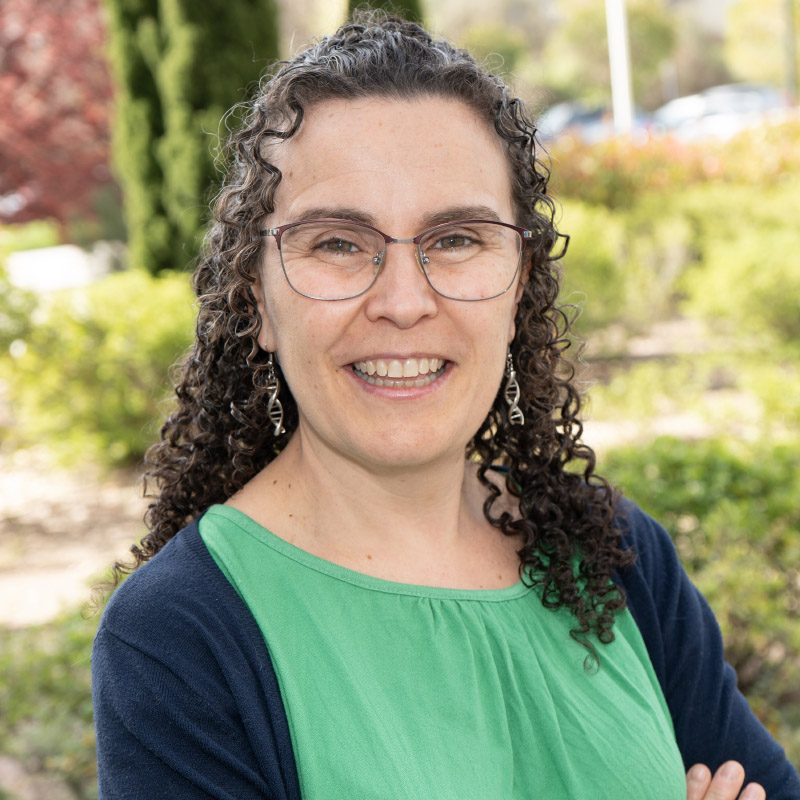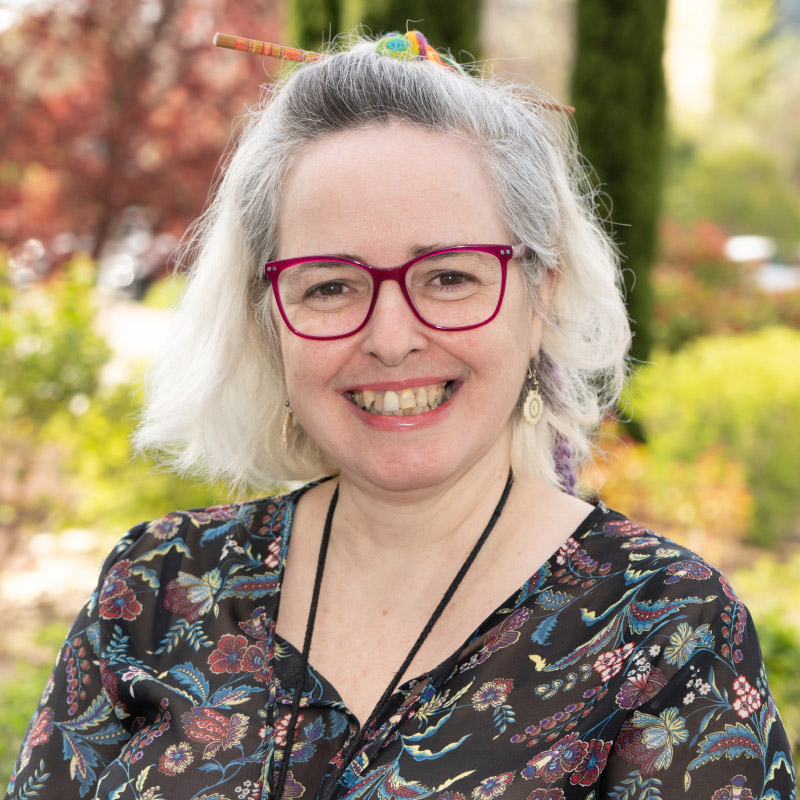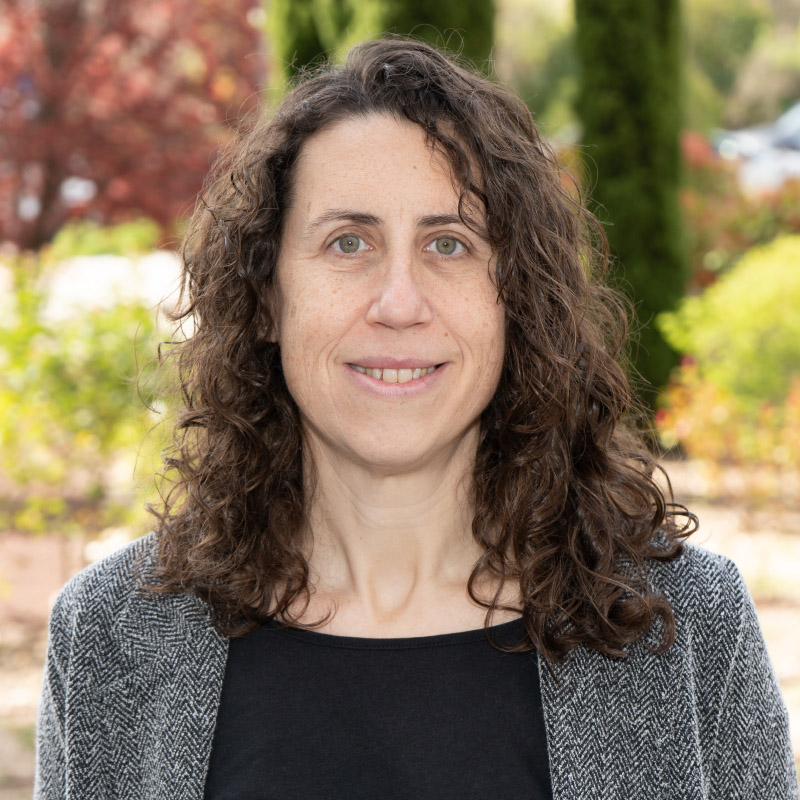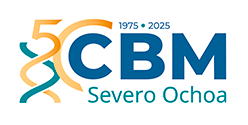Scientific facilities
Genomics
Facility Head

Laura Tabera Moreno
Scientific Lead

Leonardo Beccari
Contact details
91 196 45 99
genomica (at) cbm.csic.es
Fees
The Genomics facility of the CBM is responsible for promoting scientific research in the area of genomics and developing technologies and offering researchers both technical scientific advice and the performance of different genomics services. Since its inception, the service has tried to adapt as much as possible to the needs of the user by offering individualized attention for the design, performance and analysis of experiments, as well as the possibility of free use (by electronic reservation) of most of the equipment assigned to the service. This allows the user to decide his level of involvement in each case according to his needs and circumstances.
The services offered are carried out by highly qualified and experienced personnel. Among them we can find: extraction and quantification of nucleic acids, nucleic acid quality analysis, conventional PCR, qPCR and RT-qPCR, digital PCR, generation of NGS libraries and single cell molecular labeling.
Advice and training
The service offers technical scientific advice for the development of PCR, RT-PCR, qPCR, RT-qPCR, ddPCR and single cell experiments. Prior to the experimental execution, in order to provide an adequate response to the user’s needs, a meeting is convened to know the details of the experiment.
In addition, training courses are offered so that users acquire the necessary skills and knowledge about the different techniques performed in the service so that they can design and execute experiments autonomously.
Advice and training
The service offers technical scientific advice for the development of PCR, RT-PCR, qPCR, RT-qPCR, ddPCR and single cell experiments. Prior to the experimental execution, in order to provide an adequate response to the user’s needs, a meeting is convened to know the details of the experiment.
In addition, training courses are offered so that users acquire the necessary skills and knowledge about the different techniques performed in the service so that they can design and execute experiments autonomously.
Automated nucleic acid extraction
The service has two Maxwell 48 kits (Promega) for automated extraction of nucleic acids. These kits allow automated purification of DNA and RNA in a wide variety of samples. They operate with preloaded cartridges that greatly simplify the protocol and allow simultaneous processing of up to 48 samples.
The service offers both the possibility of using the equipment by the users (with a small amount of prior training if the user requires it) and the performance of the extractions by the service personnel.
Manual extraction of nucleic acids
In particular cases, when the particularities of the experiment are not suitable for the extraction kits of Promega’s robot, we offer the possibility of manual extraction of nucleic acids, providing a study of the protocols that best suit the experimental needs.
Spectrophotometric determination with microdrop
The service has 4 Nanodrop One equipments (Thermo Scientific) that allow spectrophotometric measurements in a wide range of wavelengths without using cuvettes. It requires a small sample volume (1-2 ul) and is capable of measuring a large number of samples in a short time. The software incorporates a number of applications specific to the type of measurement desired (quantification of nucleic acids, proteins at 280 nm, Bradford, Lowry, quantification of fluorescent labels, etc.) and includes Thermo Scientific™ Acclaro™ sample analysis technology that allows for improved measurement accuracy and identification of contaminating substances.
The service offers both the possibility of use of the equipment by the users (with a small previous training if the user requires it) and the performance of the measurements by the service personnel.
Quantification of nucleic acids by fluorimetry
The Quantus fluorimeter (Promega) allows the concentration of nucleic acids to be determined based on the emission of a fluorophore that acts as an intercalating agent. Since the binding of the fluorophore is specific to the type of nucleic acid to be determined, quantification is more accurate than by absorbance because other nucleic acids and free nucleotides that might be present in the sample do not interfere. In addition to being more accurate it is also much more sensitive, so it is recommended for detecting and quantifying small amounts of nucleic acids or when a very accurate and precise quantification is needed.
The service offers both the possibility of using the equipment by the users (with a small previous training if the user requires it) and the performance of the measurements by the service personnel.
Nucleic acid fragment and quality analysis
The facility has a Qsep100, which is a capillary gel capillary electrophoresis system with an integrated high-sensitivity LED-induced fluorescence detector. The equipment is capable of processing from 1 to 96 samples and has a variety of easily replaceable gel cartridge kits designed for nucleic acid and protein analysis. The kit provides information on the concentration and size of analyzed fragments for all types of genetic analysis and molecular biology applications. The results (qualitative and quantitative) can be displayed in gel format or as a peak profile (electropherogram).
Applications include: RNA quality analysis, quality control of NGS libraries, genomic DNA quality analysis, PCR fragment detection, microsatellite analysis…
Reverse transcription (RT)
Equipment: T100 Thermal cycler
The service offers the execution of reverse transcription reactions for users, either as part of a RT-qPCR or ddPCR experiment requested by the user or as a stand-alone service.
PCR
Equipment: T100 and C1000 Touch thermal cyclers.
The service offers the execution of PCR experiments for users, as well as experimental advice, primer design, visualization of the fragments obtained by agarose gel electrophoresis and interpretation of the results.
For this purpose, it has the following equipment: T100 Thermal Cycler (Biorad) and C1000 Touch thermal cycler (Biorad). Both equipments have a 96-well thermoblock with the possibility of temperature gradient to optimize the reaction conditions.
qPCR in 384-well plates
Equipment: CFX 384 and CFX Opus
The service has 4 qPCR equipment for 384-well plates: 2 CFX 384 (BioRad) and 2 CFX Opus (BioRad). All of them have a thermoblock for 384-well plates, 4 reading channels (which enables multiplex reactions), temperature gradient (to optimize thermal protocols) and the possibility of performing HRM after calibration of the equipment (available in one of them). The service has extensive experience in the design, optimization and development of qPCR and RT-qPCR experiments in a wide variety of applications. This technique has been used for a wide variety of experiments: gene expression by relative or absolute quantification, detection and quantification of splicing variants, detection and quantification of pathogens, genotyping, copy number variation, quantification of miRNAs, species identification…
Users are offered the execution of qPCR and RT-qPCR experiments, as well as experimental advice, primer design, analysis and delivery of results with a detailed report.
In addition, the service offers the possibility of autonomous use of three of the qPCR equipments (prior training if required by the user).
qPCR in a 32-capillary kit
Equipment: Light Cycler
The service has two Light Cycler equipment (Roche). They are designed to carry out PCR and RT-PCR assays in real time using different types of fluorescent labels. They have a blue light-emitting diode at 470 nm and three signal detector channels at 530 nm (green), 640 nm (red) and 710 nm (red). Reactions are performed in glass capillaries (up to a maximum of 32 per run).
The service offers stand-alone use of both equipment.
qPCR data analysis and results reporting
Software: Genex
Both for experiments run by the service for users and for user-run experiments, the service offers qPCR data analysis using the specialized software Genex (MutiD) as well as training in data analysis if requested by the user.
Once the analysis of the experiment has been performed, the numerical and graphical data are sent to the user along with a detailed report in English indicating how the experiment was performed.
Digital Droplet PCR (ddPCR)
Equipment: QX200 AutoDG Droplet Digital PCR System
The service has the digital droplet PCR system “QX200 AutoDG Droplet Digital PCR” (Biorad). This system consists of the following instruments:
– Automated droplet generation (AutoDG). An automatic droplet generator.
– PX1 PCR Plate Sealer. A plate heat sealer, which is necessary to cover the ddPCR plates.
– C1000 Touch Thermal Cycler. A thermal cycler with temperature gradient and “deep well” module required for the 96-well plates used in the ddPCR system.
– QX200 Droplet Reader. Droplet reader required to quantify the number of detected droplets as well as positive and negative droplets.
In digital PCR, the reaction mixture is divided (by AutoDG) into thousands of droplets in order to generate multiple micro reactions containing ideally one or no copies of the nucleic acid to be analyzed. Once the PCR reaction is performed, the droplets are analyzed with the Droplet Reader where the number of droplets generated will be determined, as well as the number of positive droplets (those containing nucleic acid) and the number of negative droplets (those not containing nucleic acid). Because the target molecules will be randomly distributed in the different droplets available, and there will not always be one or no copies, the distribution according to Poisson’s equation is used to calculate the average number of molecules in each partition (zero, one or several) and to calculate the copies of the target molecule per positive partition. Poisson’s statistical analysis of the number of positive and negative reactions results in an accurate and absolute quantification of the nucleic acid to be studied without the need to use external absolute quantification standards.
Being able to obtain an absolute quantification value without the need for external standards is very beneficial by avoiding possible contamination from these standards and by significantly increasing the quantitative range. In addition, ddPCR is more tolerant to PCR inhibitors, has high precision (necessary to detect small changes), high sensitivity, low detection limit and high reproducibility.
Users are offered the execution of ddPCR experiments, as well as experimental advice, primer design, analysis and delivery of results with a detailed report.
Single-cell assays
Chromium Single-Cell Controller
Samples have a heterogeneous cellular composition so the results obtained from bulk sequencing studies provide information obtained from all the cells studied as a whole. With single-cell technologies, cells can be studied individually, which allows the heterogeneity and composition of the sample to be studied by identifying the different cell types contained in the sample. Transcriptome studies, ATAc-seq, immune profile, etc. can be performed.
The service has Chromium iX (10X Genomics) equipment for single-cell experiments. This equipment uses microfluidic technology to encapsulate thousands of cells (or nuclei) in single-cell partitions. To do this, the cell preparation provided by the users is mixed with the partitioning oil to generate an emulsion (GEM) in which each microdrop ends up enclosing one cell. In each GEM, in addition, the transcripts are labeled with the same barcode. The next step involves the construction of libraries for sequencing. What is important in this case is that the technique allows, through the identification of each barcode, to assign the sequences to each particular cell.
The kit allows the encapsulation of 8 samples at a time and is available for several single-cell applications: gene expression (scRNAseq, snRNAseq), immune profiling, ATAC-seq and multiome ATAC + gene expression.
In addition to the use of Chromium equipment for single-cell experiments, the service is in charge of studying and implementing other types of single cell technologies in order to offer the user the technology that best suits their needs.
Generation of NGS libraries
The service offers the preparation of different types of NGS libraries from RNA or genomic DNA samples (e.g. ChIPseq) (consult in advance the type of libraries that can be offered). Once the library has been prepared, it can be analyzed in the fragment analyzer to confirm the quality and quantify by fluorimetry.
Mycoplasma detection by PCR
The service offers control of the presence of mycoplasma (an intracellular pathogen) in cell cultures by PCR. This methodology offers high sensitivity (from 10 CFU/ml) and is especially useful for human iPS/ES cell lines, where mycoplasma detection (by colorimetric assays results in false positives due to the composition of the culture medium used for the cultures.
Analysis of chromosomal rearrangements in human cell lines
Human iPS/ES cells are particularly sensitive to chromosomal rearrangement events such as translocations, inversions or deletions, as well as chromosomal aneuploidy. This also represents a major problem for CRISPR genomic editing experiments. The genomics unit offers a qPCR-based screening service from genomic DNA for the most frequently encountered chromosomal abnormalities in human cell lines. This assay complements the information provided by karyotyping experiments and offers a faster, simpler and more cost-effective (although not as resolute and exhaustive) response compared to mass sequencing analysis approaches.
Staff

Laura Tabera Moreno
Lab.: 312 Ext.: 4623
ltabera(at)cbm.csic.es

María Gabriela Atencia Cibreiro
Lab.: 312 Ext.: 4599
g.atencia(at)cbm.csic.es

Nuria Matesanz Parellada
Lab.: 312 Ext.: 4599
nmatesanz(at)cbm.csic.es
